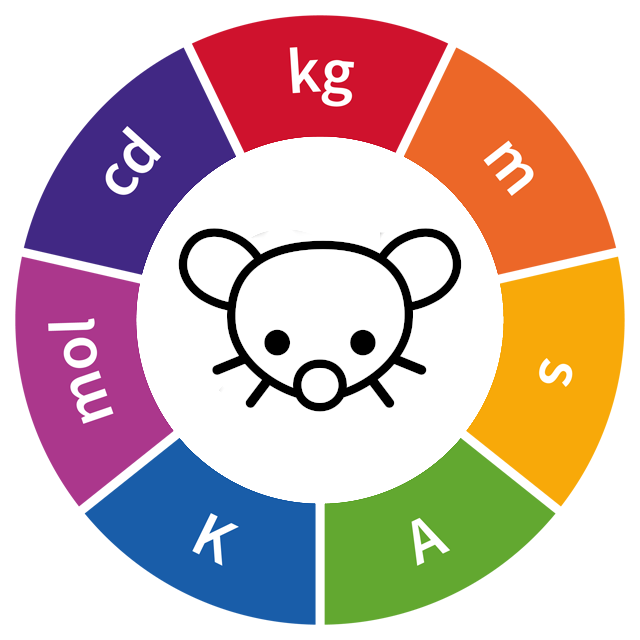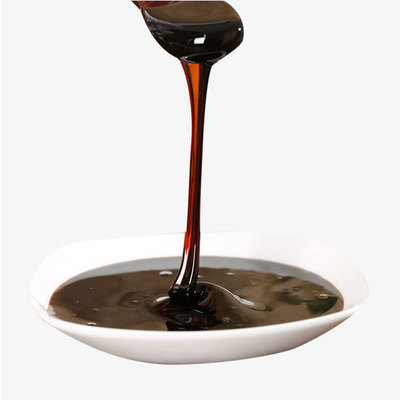Ok, but year-month-day (ISO 8601 or RFC 3339) is the only correct way to write dates. The two date formats in this image both suck (and even more so because people often can’t tell which one you’re using).
Eg, 2023-06-30, or with a time and timezone, 2023-06-30T09:54:45-0400.
And it makes it’s alphabetical sort the chronological sort when naming files leading with the date
that’s REALLY useful with official/computer stuff, but for everyday it’s pretty annoying to have to read “the deadline is twenty twenty three, July, 6th” when you already know it’s in July and in 2023. Often the only information you are looking for (the day) gets pushed in the end
It does, but in almost all cases where you are writing the date vs just saying it, the month is generally important since it’s often not certain when it will be ready, so written out M/D is generally more useful.
US was supposed to get the metric system but alas… Pirates
The reason the Fahrenheit scale does not put the freezing point of water at 0 degrees as the Celsius scale does is that Daniel Fahrenheit, the inventor of the scale, did not use the freezing and boiling points of water as the basis of his scale.
As for the date formatting, here is an interesting read on it and how it relays more information faster.
Pirates stealing our kilogram weight thus preventing the metric system is one of the funniest bits of US history to me.
Yep, was going to reply, the date format actually has benefits (that were likely not intended at first when it was popularized). The format is generally accepted to have come from the way we actually speak dates in American English. We would say, “June 30th 2023”. Thus, when writing in notation before the advent of computers (and thus before short form was popularlized 06/30/23) they would write “Jun. 30, 2023”, written in the order it is spoken. The unintended benefits of this system are that is more efficiently conveys information as presented by @[email protected] .
Regarding the first part of his reply (regarding the Fahrenheit scale), I wanted to elaborate for anyone curious. The scale was created using a eutectic solution of water and either ammonium chloride or sea salt. The key part being the solution is eutectic, meaning it will stabilize its temperature. Fahrenheit took this stable temperature to be 0 degrees, and used the work of Ole Romer to help define more of his scale. He wanted finer granularity than the Romer scale allowed, and thus multiplied romers values by 4 (to remove the fractions of common points like water melting, and body temp), and then calibrated his scale to allow for an even separation between the boiling point of water (32), and average body temp (96 on his scale). This allowed him to easily mark points between those 2 known values evenly. The scale was then again readjusted to the modern version when it was observed water boiled near, but not at 212 degrees. They adjusted it so that water would freeze at 32, and boil at 212. All of this work (before the final adjustment), was before Anders Celsius created the celsius scale and popularized the freezing/boiling point fixed points method.
Then came along Macquorn Rankine who wanted to essentially make the kelvin scale (where a change of 1 Kelvin is = 1 Degree Celsius of change), but for Fahrenheit. So a change of 1 Degree Rankine = 1 Degree Fahrenheit. This is mostly only used by engineers/scientists when dealing with heat calculations. Being a process engineer in the steel industry currently, I have not yet come across it being used at least in my industry.
The choice of water’s melting and boiling point as two points in the Celsius scale is arbitrary, too. Why not choose the melting and boiling point of something like Cesium? It would have been more fun because who doesn’t like Cesium? And it could still use °C. Humans can live in a comfortable 3 degree range in this new system. All of the other units which include temperature can be reconfigured to use this system just as easily as Celsius. We can massage everything so the Joule, etc. is based on 1°C (Cesium, not Celsius!)
I’m not defending the Imperial system. I’m just pointing out the Celsius system is based on arbitrary choices, too.
100°C as the boiling point is hugely useful for things like cooking and hot beverages. The freezing point is useful for road conditions and farming.
Fahrenheit’s arbitrariness feels a lot more arbitrary.
How is memorizing 100 any easier than memorizing 212? It’s the same brain space. When you’re born into the system, it just makes sense. Same with 32 for freezing. Remembering any two arbitrary numbers is really, really easy.
Personally, I’d rather have been raised on metric, but I’m telling you… the Fahrenheit system is no harder than Celsius.
Now fractional inches… Ugh. I do woodworking and I’d much, much rather work in mm, but “every” tool in the US and nearly every enthusiast-level technical drawing is in inches. That and all of my decades of experience is in inches, so I can easily reason about the numbers, and estimate sizes. At least in machining we use decimal inches and not fractions.
Round numbers are easier to remember.
Not only round numbers, but 0 and 100!
0 is obviously a very distinct number.
We use 100 for percentages, money, and all sorts of things.
As someone who wasn’t raised in the imperial system, I always have to try to remember if it’s 32 or 34. I doubt anyone who hears about the metric system is wondering whether it’s 0 or something else like 2 or 10 or whatever.
Freezing water is useful to everyday life, as you need to know if there’s ice on the road. So having that be a simple number makes sense
A nice, even number like 32. I agree!
Kinda like knowing that if someone’s temperature is over 100 they’re probably too hot and there might be a problem. That’s an easy number for me to remember. Do you have a problem remembering 37? Cuz I can remember 32.
The point I was responding to was claiming that the definition of the centigrade scale is arbitrary when compared to everyday life, which its clearly not.
Both obviously claim to have neater numbers for everyday life, and the change from F to C doesn’t really fit in with the argument of decimalisation like everything else, but you do have to ask why americans dont want to modernise like the rest of the world
A lot of us do. Engineers and scientists all use metric. Anyone who uses tools hate the they need to have two different sets of wrenches or whatever else. I personally find it annoying when I hear something in Celsius or metric and need to do a mental conversion (which a lot of us can’t do). I think we should switch over to metric, but a lot of us don’t like the change. And as much as I wouldn’t be that opposed to switching to Celsius, I don’t see much value in that specific metric
The value is in standardisation with the rest of the world, so you wouldnt need to convert.
It starts with you. Start using the metric system. I do the same in the UK where there is still a lot of imperial. Just talk about your weight in Kilos. Your height in cm. Your temperature in Celcius. Change your sat nav to km.
Australia already does that :v
Yes it makes sense but at least Americans are spelling “meter” the right way. :-)
The inventors of the “meter” would disagree
I prefer the metric system but have had to learn imperial due to being in the US. The only thing that bothers me is the date format. Prefer month/date/year (or y/m/d). Western calendars are organized by year/month/date. For me, writing 4/24 gives more information up front (time of year) than 24/4 (time of month).
IMO, the only logical part of the American date system is that it’s the same way you would say it (July 1st 2023).
Since English is my second language, though, and in French you would say 1er Juillet 2023, it still fucks me up anytime a date is like 10/10/2023.
I mean ppl say 4th of July even for the independence of united states, not very independent of the metric system. XD
Well the date format isn’t ‘metric’. It’s actually a little worse since it’s consistently bad, vs the US format which is inconsistently bad.
deleted by creator
Year.Month.Day also just makes it so you can automatically sort files on a disk by name and get them in chronological order.
But yeah really wish we would move over to metric in the US regardless. Especially for measurement… Heck we technically are using it too but just for “Trade and Commerce”
Now that’s something I can get behind. The previous post was so random.
I remember reading a great argument for Fahrenheit.
0 Celsius = pretty cold, 20 Celsius = comfortable, 100 Celsius = dead 0 Fahrenheit = very cold, 70 Fahrenheit= comfortable, 100 Fahrenheit = hot
0-100C is handy for science and such. 0-100F is handy for humans.
It’s not definitive and might come from a life of living with Fahrenheit, but the 0 - 100 number range feels more natural to live in than -17 - 38.
It’s probably just a matter of what you’re used to. Celcius feels just as natural to us Canadians as (I’m sure) Farenheit is to Americans. We talk in round numbers too, they’re just a bit different than yours. 0C is a (literally) freezing cold winter, 30C is a hot summer day.
That’s an awful argument for Fahrenheit.
It’s only comfortable because you use it. lol
The system was intentionally designed to have a higher granularity than the existing Romer system and was kept even after Celsius designed his system because of the higher granularity. That is what the person you replied to is getting at. There is much more granularity in what the temperature is (in whole values) in the Fahrenheit scale than in the celsius scale. Yes, you can depict any temperature of either as the other, but as a random example, 123 degrees Fahrenheit is 50.55556 celsius. Which is easier to read? The whole, Fahrenheit number
Every measurement unit needs to go into decimal places where precision matters. If you are recording a temperature in Celcius to 5 decimal places, that temperature in Farenheit will also have 5 decimal places. You just happened to pick an edge case where all those decimal places in F are 0. You could have instead picked, for e.g. 26.52348C = 79.742264F.
That is not the point of what is being stated. I even made the point that you can still depict any and all temperatures in either scale (one is not more or less precise than the other). It is that Fahrenheit is specifically designed to give you MORE whole numbers to work with over most temperature ranges (when he designed it, the Celsius system did not exist, and the Romer system was used. This had water freeze at 7.5, body temp at 22.5, and water boiling at 60 degrees. Fahrenheit made the conscious decision to space the range out more (specifically multiply the existing range by 4) to remove more of the common fractional numbers for common temperatures.
Celsius came after Romer and Fahrenheit were created, and the Fahrenheit scale is unarguably more fine grained than Celsius. You get 180 degrees to capture the temperature envelope of Solid–>Gaseous water. With Celsius you only get 100 (we are talking whole degrees here. Normal human beings do not read their outside thermometer to the 4th decimal point, assuming they for some reason had one that precise).
I am not making a case for the imperial system. I think its poorly designed and a base 10 system makes better sense in almost every application, but the Fahrenheit scale was designed to give you a more fine grained approach to temperatures in whole numbers, and it accomplishes exactly that. Neither me, nor the OP I replied to were talking about the precision of either system. They are measures of energy, and any temperature scale can capture that energy precisely, it just may not be a neat whole number, and instead some 8 decimal beast. No less precise, just way harder for humans without calculators to work with and regularly use
Edit: mistyped the boiling point of water as the difference between 212 and 32 which is 180
I understand your point that F has more whole numbers in the “habitable range”. I’m just skeptical about the importance of that fact. We don’t usually need precise temperatures in everyday life, so we tend to talk in whole numbers. But I don’t think people have any trouble using decimal places in applications where the extra precision is needed.
0C is handy for humans as things start fucking up when water starts freezing.
Remember kids, 0 degrees farenheit was set to be the temp of freezing salt water and 100 degrees was set to be the temp of the human body.
And the craziest part is, American customary units are defined by metric. For example, a foot is legally defined as 30.84cm.
Meanwhile, a meter is legally defined as the length of the path traveled by light in a vacuum during a time interval of 1/299,792,458 of a second. Reproducible anywhere, if you have the resources.
People went through pains to standardize units in the form of natural phenomenon. When you do that, you’re actually doing it for all units of measurement at once. Just because the result was initially published in metric doesn’t mean that other systems didn’t also immediately benefit from the definitions.
Since metric was used in creating these definitions, other systems just use a ratio of their system to metric because it’s simpler, and also useful for conversations between cultures.
Historically, the values of these units have been refined over time. Since the people doing the research published in metric, as the official standards evolved, it was simpler to base other systems on the metric values so they changed at the same time. My point is, if the data were published in the Imperial system, then the metric ones would be listed as ratios to the Imperial system and not the other way around. The two systems are linearly related. Why do the work twice?
I’m not defending the Imperial system. It’s difficult to work with. I’m just saying that your comment isn’t the knock on it you seem to think it is.
Mostly, except fahrenheit and Celsius are pretty much equally arbitrary, and day/month/year is consistent, but also the worse possible choice… Just an internally consistent poor choice. YYYY-MM-DD would be a consistent and good choice. dd-mm-yyyy starts showing it’s deficiency pretty much immediately when you add time to the mix, though mm-dd-yyyy is obviously worse there too.
On the C vs F side, they both go from 0 to 100, and C is obviously better for defining scientific findings, but as an everyday tool saying the temperature that I’ve dorms is important enough to be worth setting the range to 0 but the limit to what humans can generally stand is like 40-ish is so much more arbitrary than have 0 be around the lower limit of what we can stand and 100 being around the upper limit + right near or normal body temp, above which is difficult for us to function. I mean ‘when we start getting ice’ is useful and all, but a lot of the world gets colder than that for a good chunk of the year and it’s not until it gets below 0 F that we start needing to take extra care to survive, just like when it starts above 100 F for too long.
TBH the temperature humans can stand is easy in metric too. 10-30 is livable. 30-40 is getting real fucking hot. 0-10 is cold but you can cope with a little clothing
-30 to 0, though, you’re gonna need special winter clothes and shit. I would not consider 0F (~ -17C) to be the limit of what we can stand, and I’m Canadian.
Yeah, 0 isn’t the limit of what humans can endure, but it is a decent limit between ‘you need a reasonable coat and it’s not going to be comfortable being outside for long’ and ‘ok, we need to be taking some precautions and take things seriously until it comes back within reasonable temps’… Really similar to over 100…90s is pretty uncomfortable but most healthy adults with reasonable accommodations can deal with cold down to 0 and heat up to 100. Above and below those temps and you have to start prioritizing temperature into your planning for safety rather than comfort.
deleted by creator
Dont forget that with most cooking stuff 1 kg equals 1 liter.
A liter of flour weighs 0.53kg. Yep, I’m going to trust what you have to say.
Very confused about Ounces right now
As someone who regularly deals with metric and American (not British) imperial measurements, they both make sense in different circumstances.
American imperial relates well to what we see.
Metric makes math easier.
E.g.
100F is really hot — 0 F is really cold 100C is death — 0C means wear a jacket
1 mm is tiny — 1 cm is really short — 1 m is long — 1 km is kinda far (nobody really uses dm)
1 inch is short — 1 foot is kinda long — 1 yard is long — 1 mile is far away
Etc.
There are easy ways to convert between the two systems in some cases, though.
Km and miles:
Fibonacci sequence: any 2 subsequent numbers are a close approximation, with miles=lower number, km= upper number
Inches and cm:
1 inch = 2.54 cm (exact) So, 4 inches = (about) 10 cm or 100 mm
Kg and lb:
2.20462 lb = (approximately) 1 kg
Double number of kg, move decimal left, add the numbers, and you have pounds.
There are other easy (mental math) conversions between the two systems.
Note: I do not personally prefer either system in general— just have to deal with both regularly for work, and have noticed advantages to both.









